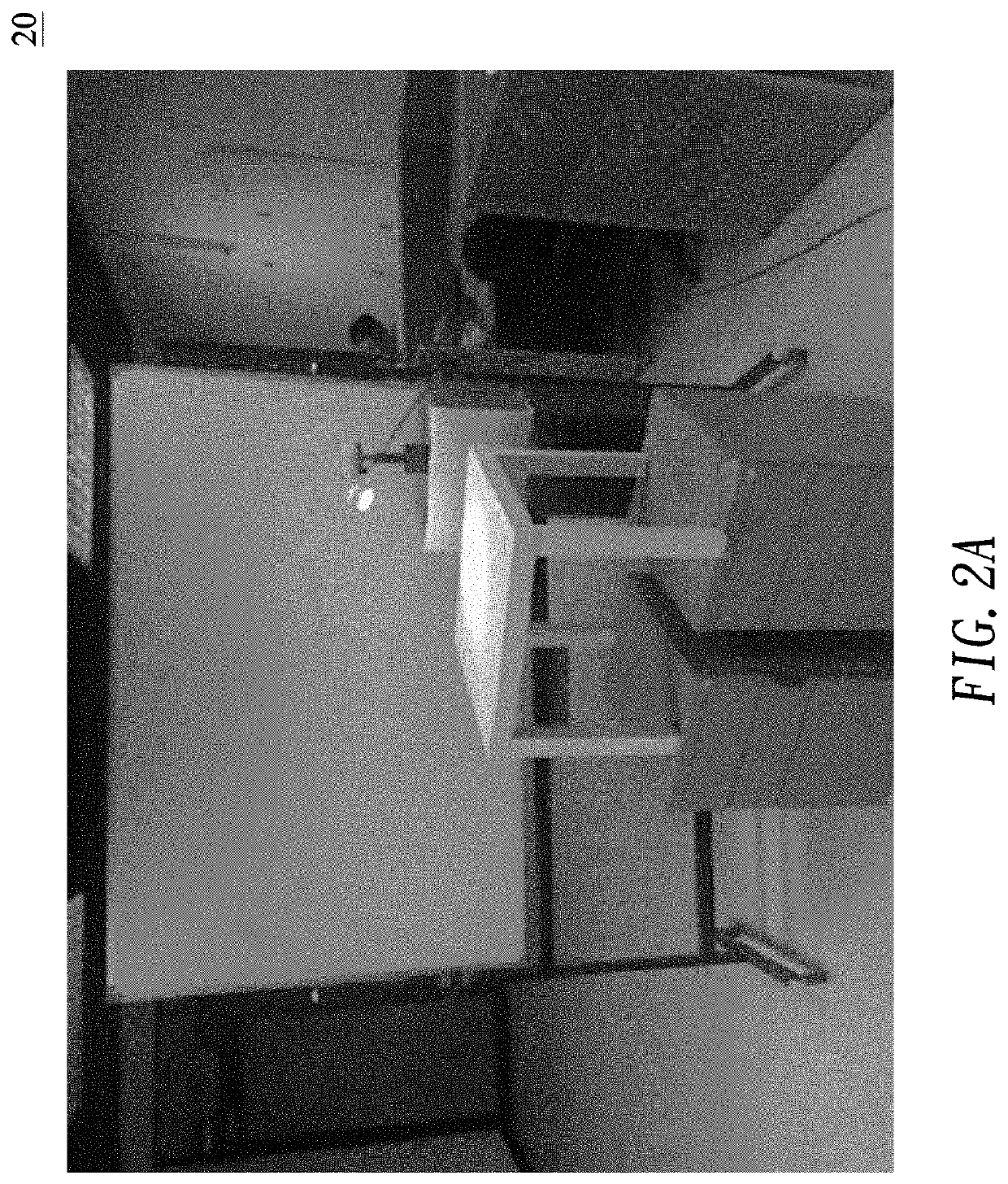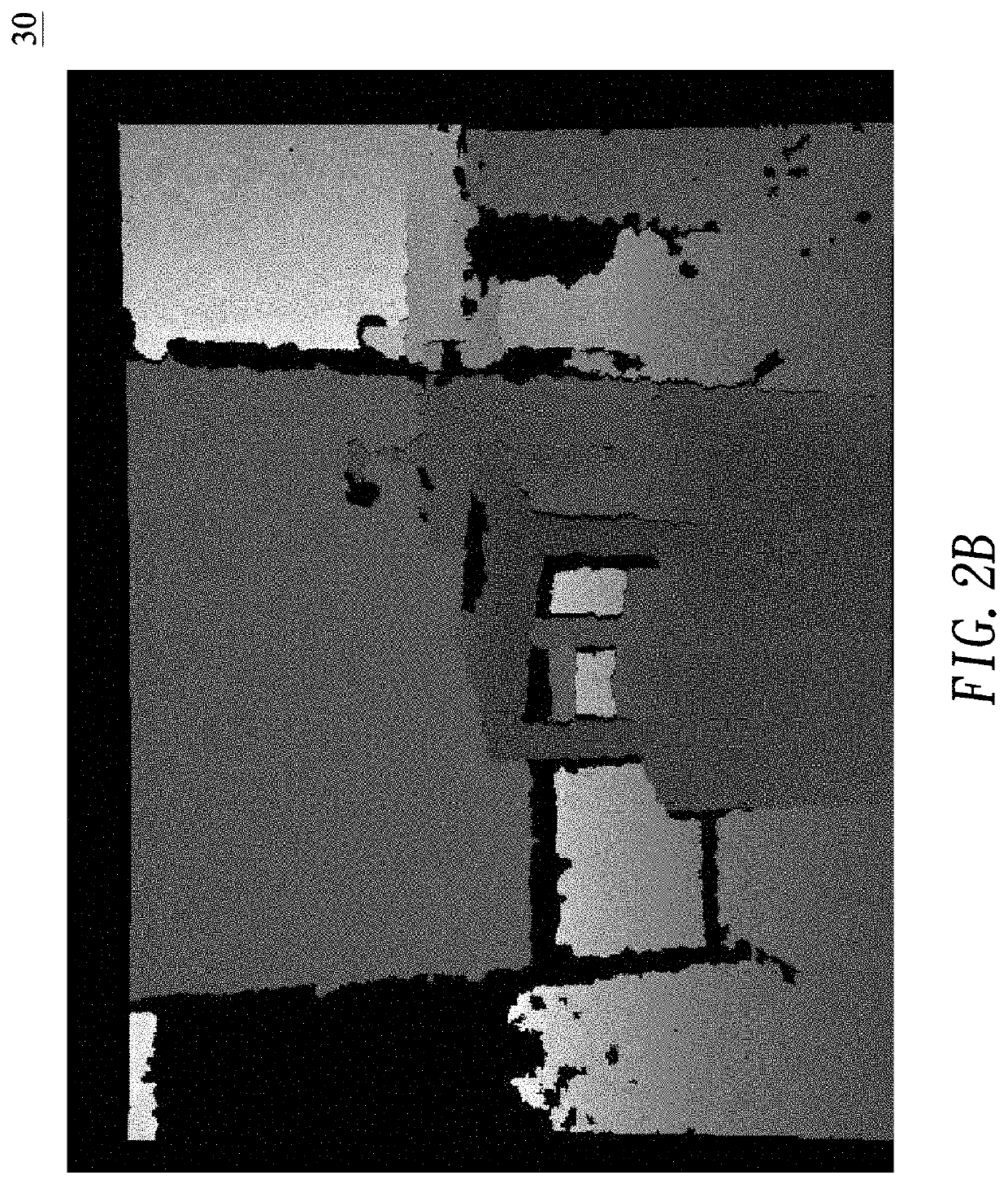Method for repairing incomplete 3D depth image using 2d image information
a 3d depth image and depth image technology, applied in image enhancement, image analysis, instruments, etc., can solve problems such as noise and produce broken point clouds
- Summary
- Abstract
- Description
- Claims
- Application Information
AI Technical Summary
Benefits of technology
Problems solved by technology
Method used
Image
Examples
first embodiment
[0037]The step of performing 3D reconstruction (S30) is described below with reference to FIG. 6A and FIG. 6B, which show the first embodiment S301 of performing 3D reconstruction on a selected 3D reconstruction block 310 for example. The step of performing 3D reconstruction (S301) includes the sub-steps of: defining a frame matrix (S310), establishing an initial-depth matrix (S320), and performing 3D depth image reconstruction (S330).
[0038]FIG. 6B shows an example of how to generate a computational frame matrix 332. In this example, a partial depth image 331, which corresponds to the selected 3D reconstruction block 310, is taken from the 3D depth image information 30 and corresponds to the computational frame matrix 332. A partial enlarged view 332A of the computational frame matrix 332 is also shown in FIG. 6B to enable better understanding of the contents of the computational frame matrix 332.
[0039]More specifically, the sub-step of defining a frame matrix (S310) is carried out ...
second embodiment
[0056]FIG. 7D shows the second embodiment S330B of the sub-step of performing 3D depth image reconstruction (S330). The 3D depth image reconstruction sub-step (S330B) includes: performing the Nth extension (S331), generating a first temporary depth matrix (S334), generating a second initial-depth matrix (S335), correcting the N+1th-computation depth matrix (S336), and repeating the 3D depth image reconstruction sub-step (S337).
[0057]FIG. 7E shows the partial 3D depth image corresponding to an N+1th-computation depth matrix 333N1, an enlarged view of the partial 3D depth image, and the N+1th-computation depth matrix itself. Performing the Nth extension (S331) is a repairing process involving extending the Nth-computation depth matrix 333N to generate the N+1th-computation depth matrix 333N1. The N+1th-computation depth matrix 333N1 is the result of the first repair.
[0058]FIG. 7F shows an example of how to generate a first temporary depth matrix. In this example, a partial 3D depth im...
PUM
 Login to View More
Login to View More Abstract
Description
Claims
Application Information
 Login to View More
Login to View More - R&D
- Intellectual Property
- Life Sciences
- Materials
- Tech Scout
- Unparalleled Data Quality
- Higher Quality Content
- 60% Fewer Hallucinations
Browse by: Latest US Patents, China's latest patents, Technical Efficacy Thesaurus, Application Domain, Technology Topic, Popular Technical Reports.
© 2025 PatSnap. All rights reserved.Legal|Privacy policy|Modern Slavery Act Transparency Statement|Sitemap|About US| Contact US: help@patsnap.com



